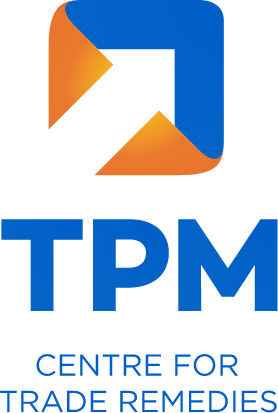Product description – Sodium cyanide is a moderately strong base. It is a poisonous compound with the formula NaCN. It is white in colour and is a water-soluble solid. It is white in colour and is a water-soluble solid. Cyanide cation has a high affinity for metals, thus, attributing high toxicity to this base.
HS Code – 283711
Uses – Extraction of gold and silver from their respective ores, in electroplating, heat treatment of metals (case hardening), manufacturing insecticides, dyes, pigments, bulk drugs and in many organic syntheses, agrochemicals, nylon intermediates, gelating compounds, ore flotation and pharmaceutical intermediates.
Country involved – China PR,European Union, Japan and Korea RP
Applicant – M/s. Hindusthan Chemical Company and UPL Limited
Date of initiation – 31st March 2023
Period of Investigation – October 2021 to September 2022
Injury Period – 2019-20, 2020-21 and 2021-22 and the period of investigation.
Margins and proposed duty –
| Country | Producers | Dumping Margin | Injury Margin | Duty (USD/MT) |
| China PR | Hebei Chengxin Co. Ltd. | 40-50 | 10-20 | 286 |
| China PR | Any other producer | 70-80 | 20-30 | 554 |
| European Union | Lučební závody Draslovka a.s. Kolín | 100-110 | 0-10 | 13 |
| European Union | Any other producer | 120-130 | 0-10 | 230 |
| Japan | Any producer | 30-40 | 20-30 | 447 |
| Korea RP | Any producer | 20-30 | 20-30 | 413 |
Key Findings –
- There was no dumping in the year 2019-20 and 2020-21. The subject countries started dumping the product under consideration once the UPL plant was set up and there was no demand and supply gap.
- The authority gave the interested parties an opportunity to give comments on the scope of PUC and PCNs. One of the interested parties submitted a letter stating there was no requirement of PCN wise analysis. Hence the authority did not adopt PCN wise analysis was not considered by the authority.
- The import price of all the subject countries declined during the period of investigation. The effects of dumped imports of product under consideration were cumulatively assessed from the subject countries on the domestic industry.
- The imports from the subject countries have been suppressing the prices of domestic industry. After setting up of UPL plant, there was no demand and supply gap. Even then they had to sell the product under consideration at lower prices to increase its market share which was below the level it can cater.
- The landed price of the imports is below the selling price of the domestic industry in the period of investigation resulting in positive price undercutting.
- The new concept of prime cost was adopted by the authority which only considers the variable cost of production, i.e. raw material cost, utility cost, packing cost and consumables. The prime cost is not a new concept but is only a part of the total cost of production. The price trend of imports over the year has to be examined. When the global cost of production remains stable throughout the injury period, a simple import price examination should be sufficient. However, if costs of production have fluctuated, a broader analysis beyond just import prices should be undertaken.
- The raw material prices have increased in the injury period. UPL is a new producer of the product under consideration and will hence have high fixed costs. The Authority compared the import price with the prime cost as an appropriate approach in the factual matrix of the case. The Authority also compared the import price over the injury period with the monthly global raw material prices.
- The aggregate data for both HCC and UPL Limited was considered for fair comparison purpose to analyse the impact of landed value vis-à-vis cost of the domestic industry as a whole.
- The dumping margin determined for each subject country is above de-minimis level and is significant.
- The impact of imposition of duties is less than even 1% for 50% of the downstream products whereas for the other products it varies between 1-2%.

